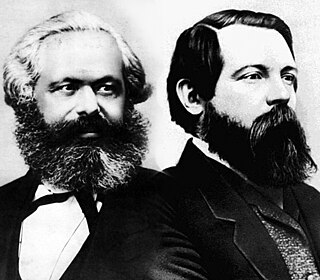 W
WThe sociology of culture, and the related cultural sociology, concerns the systematic analysis of culture, usually understood as the ensemble of symbolic codes used by a member of a society, as it is manifested in the society. For Georg Simmel, culture referred to "the cultivation of individuals through the agency of external forms which have been objectified in the course of history". Culture in the sociological field is analyzed as the ways of thinking and describing, acting, and the material objects that together shape a group of people's way of life.
 W
WArt Cluster, in global contemporary art scene, refers a group of artists that work through Internet to promote the free culture and many artistic values. The emerging telecommunications have developed a new form of communication, much faster and more direct. This allows people to work from anywhere in the world. People can easily group or perform any type of organization. Art Cluster also refers artistic production of collective intelligence. The integration of social movement in the cyberspace is one of the potential strategies of this social movement.
 W
WThe art world comprises everyone involved in producing, commissioning, presenting, preserving, promoting, chronicling, criticizing, buying and selling fine art. It is recognized that there are many art worlds, defined either by location or alternative definitions of fine art. Some may use the singular art world to refer only to the elite level of globalized fine art. The art world(s) are continually changing in response both to the creativity of those that create art and in response to social change.
 W
WAuto-segregation or self-segregation is the separation of a religious or ethnic group from the rest of society in a state by the group itself. This could also mean inability for a normal social interaction and a form of social exclusion.
 W
WRobert Neelly Bellah was an American sociologist and the Elliott Professor of Sociology at the University of California, Berkeley. He was internationally known for his work related to the sociology of religion.
 W
WBourgeoisie is a polysemous French term that can mean:a sociologically defined social class, especially in contemporary times, referring to people with a certain cultural and financial capital belonging to the middle or upper middle class: the upper (haute), middle (moyenne), and petty (petite) bourgeoisie ; an affluent and often opulent stratum of the middle class as contrasted with the proletariat class. originally and generally, "those who live in the borough", that is to say, the people of the city, as opposed to those of rural areas; in this sense, the bourgeoisie began to grow in Europe from the 11th century and particularly during the Renaissance of the 12th century, with the first developments of rural exodus and urbanization. a legally defined class of the Middle Ages to the end of the Ancien Régime in French-speaking Europe, that of inhabitants' having the rights of citizenship and political rights in a city.
 W
WCultural sustainability as it relates to sustainable development, has to do with the maintaining of cultural beliefs, cultural practices, heritage conservation, culture as its own entity, and attempts to answer the question of whether or not any given cultures will exist in the context of the future. From cultural heritage to cultural and creative industries, culture is both an enabler and a driver of the economic, social, and environmental dimensions of sustainable development. Culture is defined as a set of beliefs, morals, methods, and a collection of human knowledge that is dependent on the transmission of these characteristics to younger generations. Sustainability is defined as the ability to sustain or continue. The two concepts have been intertwined within social and political domains, and as such, have become one of the more important concepts of sustainability.
 W
WCulture shock is an experience a person may have when one moves to a cultural environment which is different from one's own; it is also the personal disorientation a person may feel when experiencing an unfamiliar way of life due to immigration or a visit to a new country, a move between social environments, or simply transition to another type of life. One of the most common causes of culture shock involves individuals in a foreign environment. Culture shock can be described as consisting of at least one of four distinct phases: honeymoon, negotiation, adjustment, and adaptation.
 W
WDiffusion of innovations is a theory that seeks to explain how, why, and at what rate new ideas and technology spread. Everett Rogers, a professor of communication studies, popularized the theory in his book Diffusion of Innovations; the book was first published in 1962, and is now in its fifth edition (2003). Rogers argues that diffusion is the process by which an innovation is communicated over time among the participants in a social system. The origins of the diffusion of innovations theory are varied and span multiple disciplines.
 W
WKorean ethnic nationalism, or racial nationalism, is a political ideology and a form of ethnic identity that is widely prevalent in modern North and South Korea. It is based on the belief that Koreans form a nation, a race, and an ethnic group that shares a unified bloodline and a distinct culture. It is centered on the notion of the minjok, a term that had been coined in Imperial Japan ("minzoku") in the early Meiji period on the basis of Social Darwinian conceptions. Minjok has been translated as "nation", "people", "ethnic group", "race", and "race-nation".
 W
WEthnocentrism in social science and anthropology—as well as in colloquial English discourse—means to apply one's own culture or ethnicity as a frame of reference to judge other cultures, practices, behaviors, beliefs, and people, instead of using the standards of the particular culture involved. Since this judgement is often negative, some people also use the term to refer to the belief that one's culture is superior to, or more correct or normal than, all others—especially regarding the distinctions that define each ethnicity's cultural identity, such as language, behavior, customs, and religion. In common usage, it can also simply mean any culturally biased judgment. For example, ethnocentrism can be seen in the common portrayals of the Global South and the Global North.
 W
WEveryday life, daily life or routine life comprises the ways in which people typically act, think, and feel on a daily basis. Everyday life may be described as mundane, routine, natural, habitual, or normal.
 W
WThe hype cycle is a branded graphical presentation developed and used by the American research, advisory and information technology firm Gartner to represent the maturity, adoption, and social application of specific technologies. The hype cycle claims to provide a graphical and conceptual presentation of the maturity of emerging technologies through five phases.
 W
WCultural identity is the identity of belonging to a group. It is part of a person's self-conception and self-perception and is related to nationality, ethnicity, religion, social class, generation, locality or any kind of social group that has its own distinct culture. In this way, cultural identity is both characteristic of the individual but also of the culturally identical group of members sharing the same cultural identity or upbringing.
 W
WAn intellectual is a person who engages in critical thinking, research, and reflection about the reality of society, who may also propose solutions for the normative problems of society, and thus gains authority as a public intellectual.
 W
WThe Invention of Art: A Cultural History (2001) is an art history book by Larry Shiner, Emeritus Professor of Philosophy, History, and Visual Arts at the University of Illinois, Springfield Shiner spent over a decade to finish the work of this book.
 W
WThe sociology of literature is a subfield of the sociology of culture. It studies the social production of literature and its social implications. A notable example is Pierre Bourdieu's 1992 Les Règles de L'Art: Genèse et Structure du Champ Littéraire, translated by Susan Emanuel as Rules of Art: Genesis and Structure of the Literary Field (1996).
 W
WThe term multiculturalism has a range of meanings within the contexts of sociology, of political philosophy, and of colloquial use. In sociology and in everyday usage, it is a synonym for "ethnic pluralism", with the two terms often used interchangeably, for example, a cultural pluralism in which various ethnic groups collaborate and enter into a dialogue with one another without having to sacrifice their particular identities. It can describe a mixed ethnic community area where multiple cultural traditions exist or a single country within which they do. Groups associated with an indigenous, aboriginal or autochthonous ethnic group and settler-descended ethnic groups are often the focus.
 W
WThe technology adoption lifecycle is a sociological model that describes the adoption or acceptance of a new product or innovation, according to the demographic and psychological characteristics of defined adopter groups. The process of adoption over time is typically illustrated as a classical normal distribution or "bell curve". The model indicates that the first group of people to use a new product is called "innovators", followed by "early adopters". Next come the early majority and late majority, and the last group to eventually adopt a product are called "Laggards" or "phobics." For example, a phobic may only use a cloud service when it is the only remaining method of performing a required task, but the phobic may not have an in-depth technical knowledge of how to use the service.
 W
WThe technology life-cycle (TLC) describes the commercial gain of a product through the expense of research and development phase, and the financial return during its "vital life". Some technologies, such as steel, paper or cement manufacturing, have a long lifespan while in other cases, such as electronic or pharmaceutical products, the lifespan may be quite short.
 W
WTick-box culture or in U.S. English check-box culture, is described as bureaucratic and external impositions on professional working conditions, which can be found in many organizations around the world. Another related term is the culture of performativity.